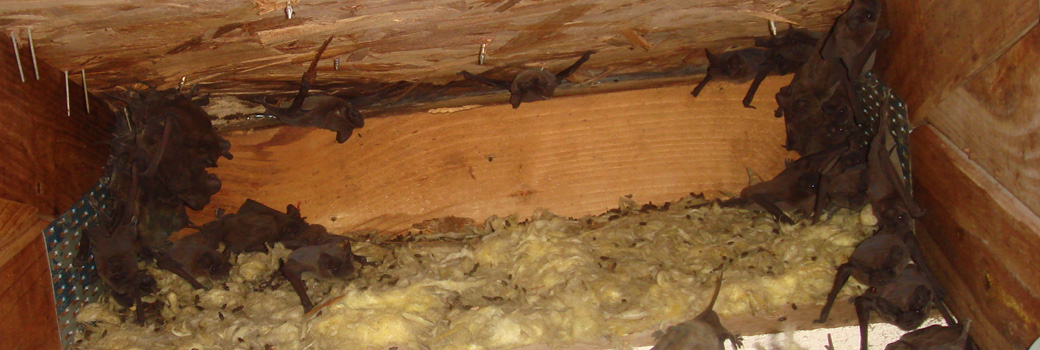- San Jose Educational Article of the Month - What is a bat’s natural habitat?
What is a bat’s natural habitat?
What is a bat’s natural habitat?
There are 2 specific types of California bat boasting over 1200 different species of bats between them in
the world. They can be found in almost every country and on every continent. Where they like
to live, i.e., their habitat can be as varied as they are. They exist in almost every habitat
available on the Earth. Many species use different types of habitats. Some bats vary their habitats
from seasons to season, some depend on mating habits, and some on availability. All bat habitats have
these things in common- A place to roost during daylight or hibernation, and ample food and water for
foraging. Some of the more unusual types of bat are the banana bat who roosts in banana plants, the ghost
bat who like to roost under palm leaves, and the wrinkle faced bat that can roost almost anywhere because he
covers his face with a large flap of skin when he sleeps. Despite the aforementioned bats, and few other odd
varieties, almost all bats have similar likes in roosting.

In the spring females join together to prepare a maternity roost and live together in a colony for about
five months while they birth and raise their young. For this type of roost females look for warm quiet spaces
like hollow San Jose trees, high caves, abandoned buildings and attic spaces.
In the winter bats go into hibernation, lowering their body temperature to conserve energy. This deep sleep requires a
space that is humid, and remains cool and at a constant temperature. Underground Caves, abandoned mines, cellars, basements,
and service tunnels are a perfect spot for a California bat’s hibernacula.
Bats are one of the most highly adaptable creatures on earth. Because of this ability, bats have been known to find make shift
housing almost anywhere if there preferred shelter is not available. The onslaught of man has been encroaching on many animals’
natural habitats for years. Bats are no exception. While most San Jose bats prefer caves, hollow logs, or trees with dense canopies, they
will settle for manmade structures if necessary. There are the obvious man-made choices such as under passes, abandoned buildings,
barns, garages, and attics. But on occasion bats have had to become inventive to escapes the delight or inclement weather.
They have been found in abandoned subway tunnels, in the eaves of houses, and abandoned boats. Bats will also take advantage
of an intentional made –made structure, the bat house. These are inexpensive and an easy DIY project if you want to attract the
flying fur balls to your California yard.
To learn more about our services, visit the San Jose wildlife removal home page.

